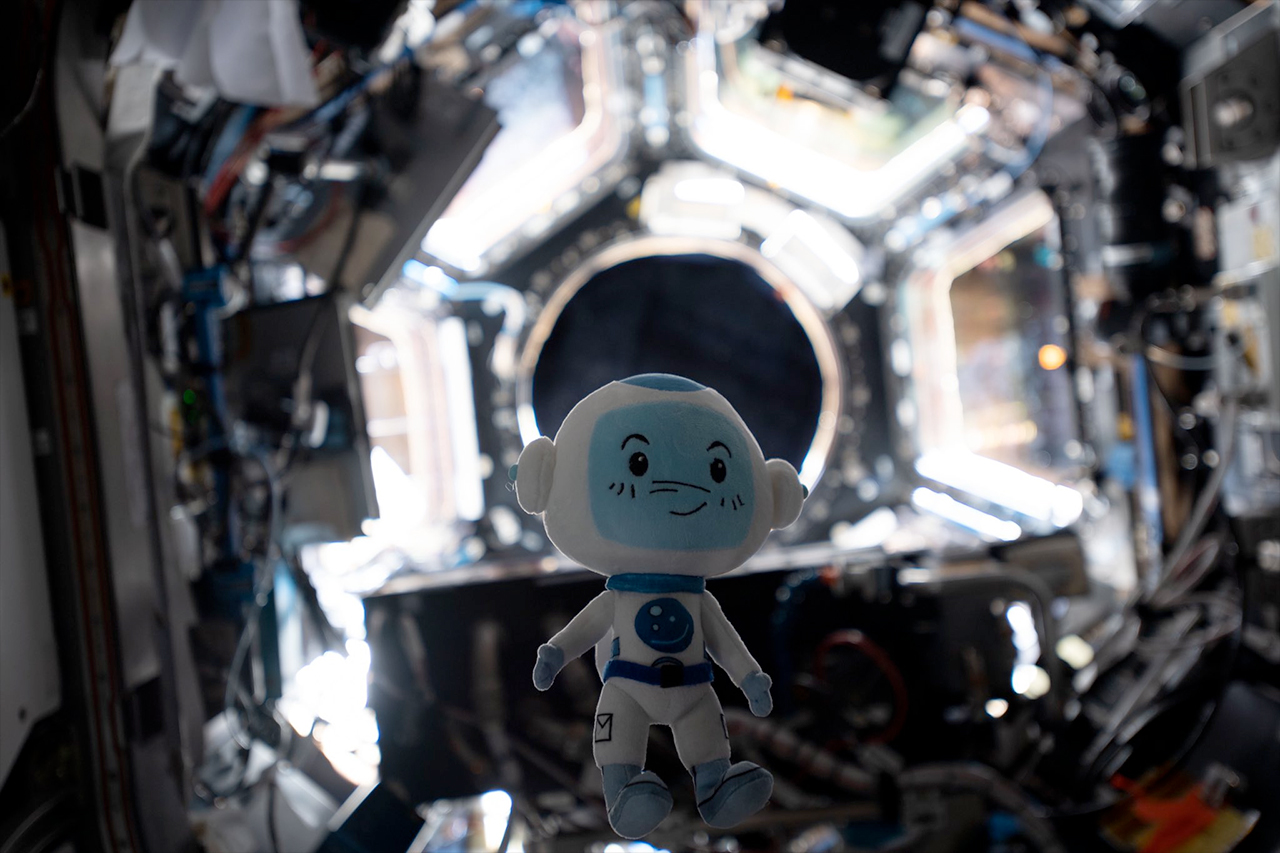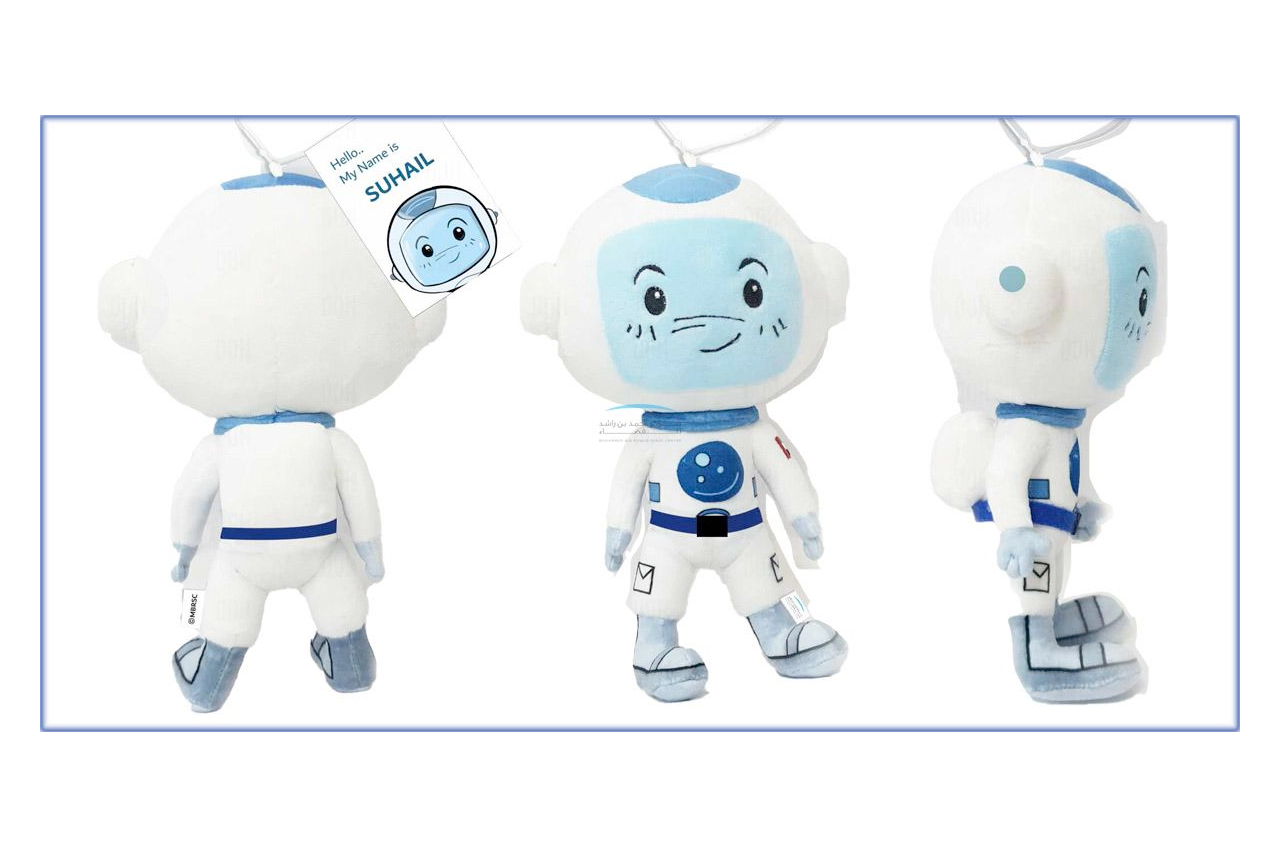UAE astronaut mascot 'Suhail' flies again as SpaceX Crew-6 zero-g indicator
"Many people think Suhail is an alien, but to me he is a [young] man in a spacesuit with high ambitions."

The first Emirati to embark on a long-duration space mission lifted off with two Americans, a Russian and, as was revealed once they were all safely in orbit, a fellow "countryman" making its second launch with an astronaut from the United Arab Emirates (UAE).
Sultan Al Neyadi introduced his mission's "fifth crew member" as it floated at the end of a tether aboard SpaceX's Dragon spacecraft "Endeavour" on Thursday (March 2), signaling that Al Neyadi and the three other (human) members of Crew-6 — Stephen Bowen, Warren "Woody" Hoburg and Andrey Fedyaev — were in the weightless environment of space.
"His name is Suhail," said Al Neyadi soon after the launch was over and Endeavour was on its way to the International Space Station. "Suhail is the Arabic name for the star Canopus. In the Middle East, we anticipate the appearance of Canopus because it marks the end of summer and the beginning of cool times."
The plush spacesuit-clad character previously spent eight days off the planet with the UAE's first astronaut to reach space.
Related: How to watch SpaceX's Crew-6 astronaut docking live online tonight for free
"Canopus is actually the second brightest star in the night sky and this is the second flight for Suhail," said Al Neyadi. "It flew with Hazza Al Mansoori in 2019."
After arriving at the space station on Friday, Suhail will spend the next six months aboard the orbiting laboratory, accompanying Al Neyadi on the longest spaceflight by an Arab in history.
Breaking space news, the latest updates on rocket launches, skywatching events and more!
"Many people think Suhail is an alien, but to me he is a [young] man in a spacesuit with high ambitions," Al Neyadi said.
On its first spaceflight aboard Russia's Soyuz MS-15 spacecraft, the plush astronaut was flown as a memento carried by Al Mansoori to and from the space station. On Endeavour, Suhail's role was as the Crew-6 "zero-g indicator."
A tradition that was first started by Soviet-era cosmonauts and later adopted by SpaceX for its Crew Dragon spaceflights, zero-g indicators signal to the astronauts that they have entered orbit — or are in free fall around Earth — such that they experience weightlessness. Suhail is the 11th stuffed toy to launch on a SpaceX mission.
Earlier zero-g indicators have included a plush Earth, a sequined dinosaur, a toy Grogu (Star Wars' "baby Yoda"), a baby penguin, a couple of turtles, a couple of dogs, a monkey and an Albert Einstein doll.
Suhail is the first SpaceX zero-g indicator to have flown in space before, but a number of Russian cosmonauts have made it a custom to fly the same toy on each of their Soyuz flights. Even the doll carried by Yuri Gagarin, the first person to fly into space in 1961, was re-flown 30 years later on a mission to the space station Mir.
In addition to flying on Emirati space missions, Suhail also serves as the mascot of the UAE astronaut program at the Mohammed Bin Rashid Space Center in Dubai. Suhail was created by Saeed Al Emadi, a member of the center's communications team, as a means of engaging the public, and in particular children, on the ground.
"I came up with the idea to design the mascot that would represent our center, as well as be a part of the mission to the International Space Station. At the same time, I wanted to create a character that could interact with the larger audience and teach the youth about space and related science," Al Emadi told The National newspaper in 2021.
The Mohammed Bin Rashid Space Center sells a replica Suhail plush toy through its online store. The doll retails for 55 AED (about $15 U.S.) but is only available to ship to UAE addresses.
Follow collectSPACE.com on Facebook and on Twitter at @collectSPACE. Copyright 2023 collectSPACE.com. All rights reserved.

Robert Pearlman is a space historian, journalist and the founder and editor of collectSPACE.com, a daily news publication and community devoted to space history with a particular focus on how and where space exploration intersects with pop culture. Pearlman is also a contributing writer for Space.com and co-author of "Space Stations: The Art, Science, and Reality of Working in Space” published by Smithsonian Books in 2018.
In 2009, he was inducted into the U.S. Space Camp Hall of Fame in Huntsville, Alabama. In 2021, he was honored by the American Astronautical Society with the Ordway Award for Sustained Excellence in Spaceflight History. In 2023, the National Space Club Florida Committee recognized Pearlman with the Kolcum News and Communications Award for excellence in telling the space story along the Space Coast and throughout the world.



